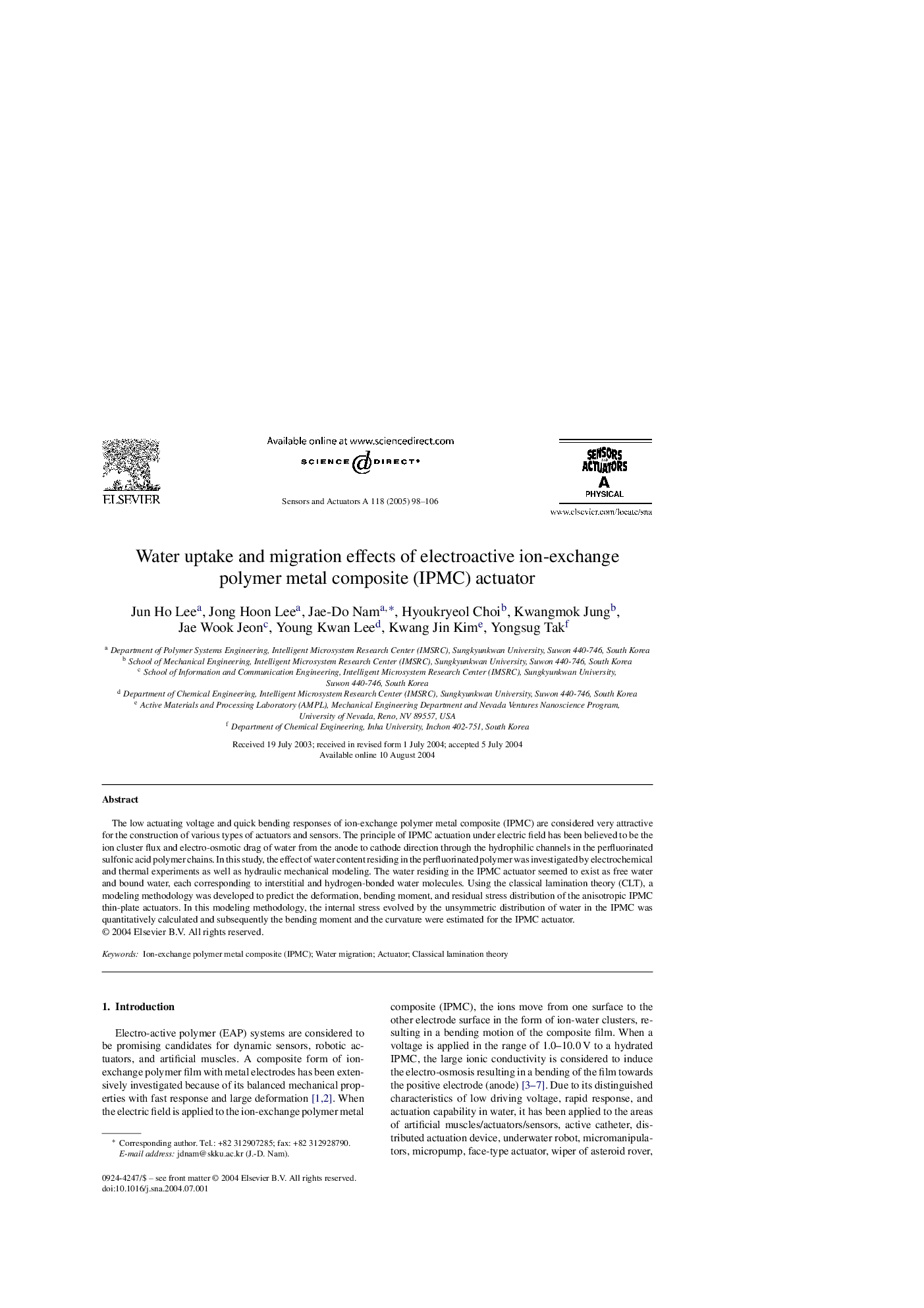| Article ID | Journal | Published Year | Pages | File Type |
|---|---|---|---|---|
| 10412378 | Sensors and Actuators A: Physical | 2005 | 9 Pages |
Abstract
The low actuating voltage and quick bending responses of ion-exchange polymer metal composite (IPMC) are considered very attractive for the construction of various types of actuators and sensors. The principle of IPMC actuation under electric field has been believed to be the ion cluster flux and electro-osmotic drag of water from the anode to cathode direction through the hydrophilic channels in the perfluorinated sulfonic acid polymer chains. In this study, the effect of water content residing in the perfluorinated polymer was investigated by electrochemical and thermal experiments as well as hydraulic mechanical modeling. The water residing in the IPMC actuator seemed to exist as free water and bound water, each corresponding to interstitial and hydrogen-bonded water molecules. Using the classical lamination theory (CLT), a modeling methodology was developed to predict the deformation, bending moment, and residual stress distribution of the anisotropic IPMC thin-plate actuators. In this modeling methodology, the internal stress evolved by the unsymmetric distribution of water in the IPMC was quantitatively calculated and subsequently the bending moment and the curvature were estimated for the IPMC actuator.
Related Topics
Physical Sciences and Engineering
Chemistry
Electrochemistry
Authors
Jun Ho Lee, Jong Hoon Lee, Jae-Do Nam, Hyoukryeol Choi, Kwangmok Jung, Jae Wook Jeon, Young Kwan Lee, Kwang Jin Kim, Yongsug Tak,
